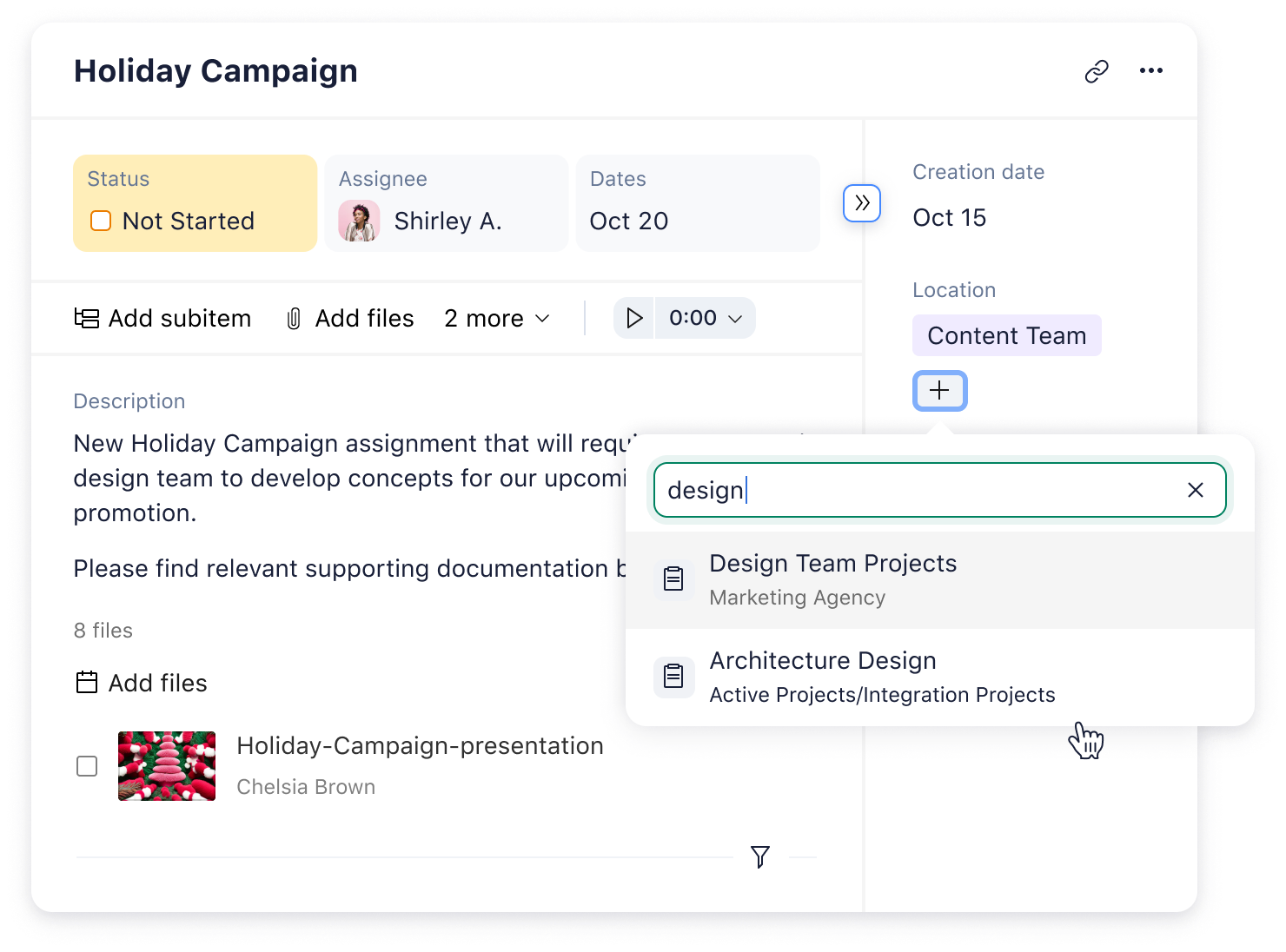Key takeaways:
- What are the key traits of effective organizations? Effective organizations exhibit leadership, communication, employee empowerment, teamwork, customer focus, agility, operational excellence, social responsibility, and innovation.
- How does a clear vision impact a company? A clear vision provides direction and purpose, making every task meaningful for employees.
- Why is open communication crucial? Open communication fosters collaboration and engages employees, driving overall organizational success.
- What role does employee empowerment play? Empowered employees innovate and contribute to organizational growth, feeling valued for their contributions.
- How can tools like Wrike enhance effectiveness? Wrike streamlines processes and enhances communication, improving task management and operational efficiency.
You know how they say there’s no “I” in a team? But there’s definitely an “I” in “ineffective.” And guess what? In the grand scheme of organizational effectiveness, each “I,” each individual, plays a starring role.
So, what are these traits? Imagine walking into a place where the vibe is just ... right. People are engaged, there’s a clear sense of direction, and innovation is a way of life. That’s the kind of feeling we’re talking about!
But how do organizations achieve these qualities? Good question! It boils down to solid leadership, crystal-clear communication, a killer vision, and a few other traits we will discuss. And these traits aren’t exclusive to the big players; even the smallest organizations can embody them and shoot for the stars.
In this article, we’ll explore the 10 key traits of effective organizations. We’ll also introduce you to Wrike, the most powerful work management software top companies like Walmart Canada and Siemens Smart Infrastructure use to automate and simplify their work.
Join the organizations using Wrike to automate their processes — start your free trial now.
1. Clear vision and mission
Have you ever been on a road trip without a map? You know that could turn out chaotic, right? That’s precisely what it’s like for a company without a clear vision and mission. Establishing a strong organizational purpose involves defining why the company exists and its aims. All employees should communicate this purpose to create a shared sense of purpose and direction.
What makes this so cool? Because when the going gets tough, that vision keeps everyone pushing forward. It makes every task feel meaningful. And let’s not forget the mission — it’s your game plan. How will you make that dream a reality? You break down the big “why” into actionable steps.
For example, if you’re aiming to make the best pizza in town, your mission might be sourcing the freshest ingredients or creating a cozy, family-friendly atmosphere. Then, you can use tools like Wrike’s OKR template to set milestones and keep everyone in the loop with regular progress checks.

2. Effective leadership
Now, what’s a ship without a captain? Effective leadership steers the ship, even when the waters get rough. As a leader, you need to be the person who says, “I’ve got the map, follow me,” but also, “What do you think? Got a better route?”
Great leaders are cheerleaders with a strategy. They pump up the team, keep spirits high, and ensure everyone plays to their strengths. They have one-on-ones to check on projects and ask, “Hey, you good?”
And it’s not just about leading from the front. Leaders who lead by example are particularly effective in inspiring their team members. When a leader demonstrates a strong work ethic, a positive attitude, and a commitment to excellence, it sends a powerful message to employees that these are the values the organization holds dear. This, in turn, encourages them to emulate these behaviors and strive for excellence in their work.
3. Open communication
Effective communication is the cornerstone of any successful organization. It fosters collaboration, productivity, and a sense of community among employees. When communication is open and honest, team members feel comfortable expressing themselves, asking for feedback, and proposing new ideas. This level of engagement leads to a more invested and motivated workforce, which ultimately drives the organization’s success.
Open communication also drives clarity and transparency, and technology can play an important part here. Imagine being able to tag a task in multiple projects in your project management software — that’s cross-tagging for you. With cross-tagging, a shared task isn’t locked in one phase or project; it lives wherever it’s needed, breaking down silos and fostering transparency. That way, when you share that game-changing idea, it’s visible in all the relevant spaces with just one click.
Cross-tagging in platforms like Wrike ensures your voice is heard throughout the project. Now, that’s taking open communication to a whole new level of operational efficiency.

4. Employee empowerment
Empowered employees are the ones who innovate, who aren’t afraid to take risks, and who feel valued beyond their job descriptions. As an employee, empowerment is that feeling when your manager says, “We trust you, we believe in you, now go and show us what you’ve got!” As an organization, you need to give your employees the tools and freedom to shape their roles, grow, and make a real impact.
But how?
- Start with trust.
- Believe in your team’s expertise.
- Provide growth opportunities.
- Recognize achievements.
- Celebrate all wins, big and small.
- Make employees feel valued.
- Show people their impact matters.
5. Strong teamwork
Teamwork makes the dream work. Have you watched a sports team in perfect sync? It feels like they read each other’s minds. That’s strong teamwork in action!
Collaboration and cooperation among team members require creating an environment that encourages open communication, promotes diversity, and values teamwork. Consider trying team-building activities, brainstorming sessions, and regular team meetings. By providing a safe and supportive space for team members to express their ideas and concerns, you can help build trust and encourage collaboration. The camaraderie allows team members to share their ideas more frequently and work together to solve potential issues.
Alexey Korotich, Wrike’s Vice President of Product, sees a bright future for collaborative work management (CWM) tools. He predicts they will take the business world by storm, especially among the top executives. Alexey points out that business leaders — nearly half, to be exact — are planning to increase their IT budgets, and many are evaluating new projects or work management software.
Bring your teams together in Wrike, a leader for collaborative work management — start your free trial now.
6. Customer focus
Putting customers at the heart of everything is non-negotiable. In organizations that get it right, every decision, big or small, starts and ends with, “What would our customers love?” You have to listen to their feedback (yes, even the not-so-great stuff) and use it as a roadmap to improve.
Customer focus means going the extra mile — not because you have to, but because making your customers smile makes you smile. After all, happy customers are the best brand ambassadors any organization could ask for.
7. Agility and adaptability
Agility and adaptability mean you’re ready to change direction whenever needed. It’s realizing that Plan A might not always work out, and that’s okay because plans B through Z are up your sleeve. These traits allow you to create a culture where change is an exciting opportunity to grow and learn.
Being agile and adaptive requires a laser focus on innovation and continuous improvement, employing an iterative approach to problem solving and building a culture of learning and experimentation. Avoid being complacent and strive to embrace change as a driving force for growth and success.
8. Operational excellence
Operational excellence is the dream, right? It’s when your organization’s processes, systems, and workflows run smoothly. Operational excellence focuses on efficiency, productivity, and doing things right the first time. But it’s not just about cutting costs or speeding up processes. You have to create value — for your customers, employees, and stakeholders. You need to continuously improve and strive to be better today than you were yesterday.
Effective organizations use a data-driven approach to improve processes and eliminate inefficiencies continuously. They establish standard operating procedures (SOPs), measure performance, and identify and manage risk — for better performance, enhanced customer satisfaction, and lower costs.
You can take control of your workload without your team burning out using Wrike’s task management software. You can use custom request forms to gather all the necessary details, eliminating the dreaded hunt through endless email threads.

9. Social responsibility
Social responsibility is important in a world where consumers value ethics as much as a good product or service. You need to recognize that your organization is part of a larger community and has a role in making the world a better place.
Adopting and implementing responsible business practices, such as reducing environmental impacts, promoting diversity and inclusion, and giving back to the community, enhances your organization’s reputation and promotes social and environmental sustainability.
10. Innovation
And finally, let’s talk about innovation. Effective organizations think outside the box; they challenge the status quo and ask, “What’s next?”
Innovative organizations are the ones that lead the way, setting trends instead of following them. They’re the ones that aren’t afraid to take risks, try new things, and fail, because they know that’s how breakthroughs happen.
By promoting a mindset of experimentation and continuous improvement, businesses can create new products, processes, and systems that meet customer needs and deliver better outcomes.
Using Wrike for organizational effectiveness
So, what have we learned? What makes an organization stand out? It’s not rocket science. All you need is a clear goal with a well-laid-out plan, and leaders who are willing to champion innovation and communicate.
Now, it’s one thing to talk the talk, but walking the walk? That’s where it gets real. And guess what helps make it a reality? You’ve got it — tools that bring all these great ideas together.
That’s why organizations use Wrike to streamline their work processes and operations. Using Wrike means less time scratching your head over spreadsheets or chasing people for updates. You can create tasks, attach files, set deadlines, and personalize your dashboard the way you want it.
Jessica Wooding from Chosen Foods mentions how using Wrike’s dashboards means doing more with less. She says:
“I was instantly able to remove four hours of meetings a week through shared dashboards. I refocused this saved time on education opportunities for the team, which improved our process for initiatives.”
Ready to make your work life easier and more effective? Start your free trial with Wrike today and see the difference for yourself.
Note: This article was created with the assistance of an AI engine. It has been reviewed and revised by our team of experts to ensure accuracy and quality.



